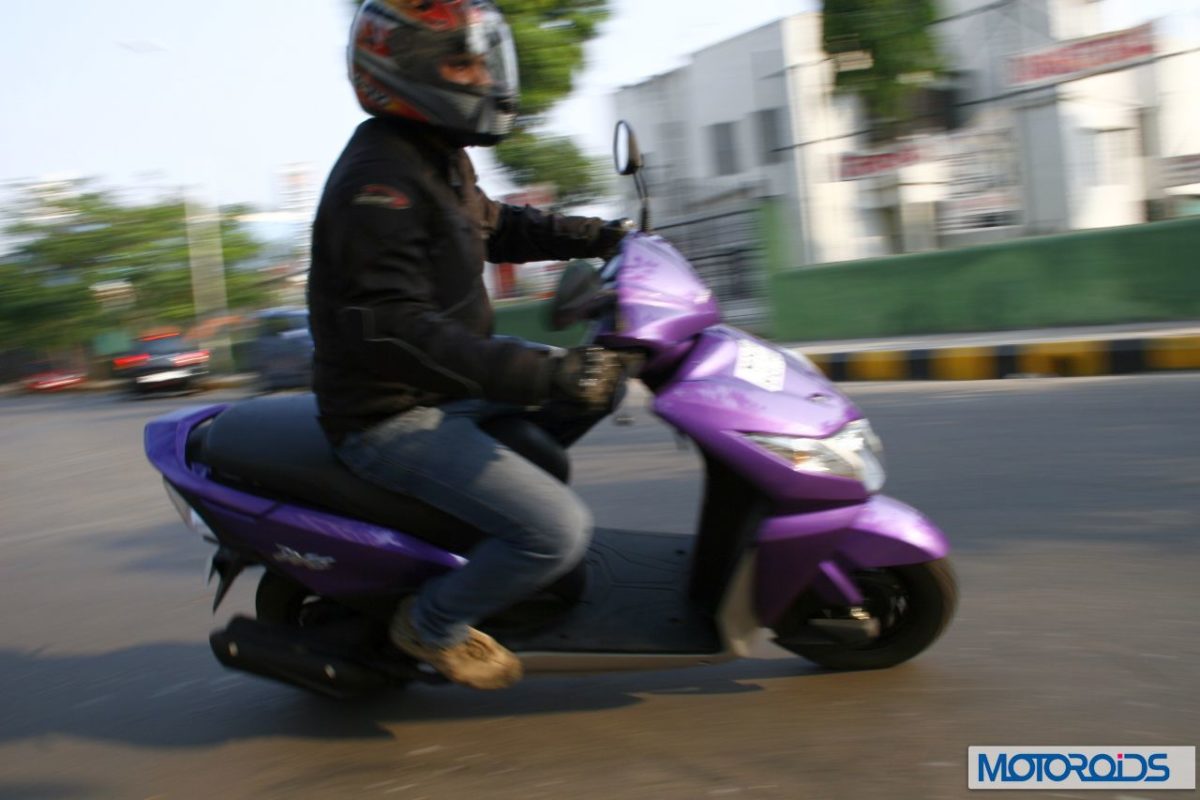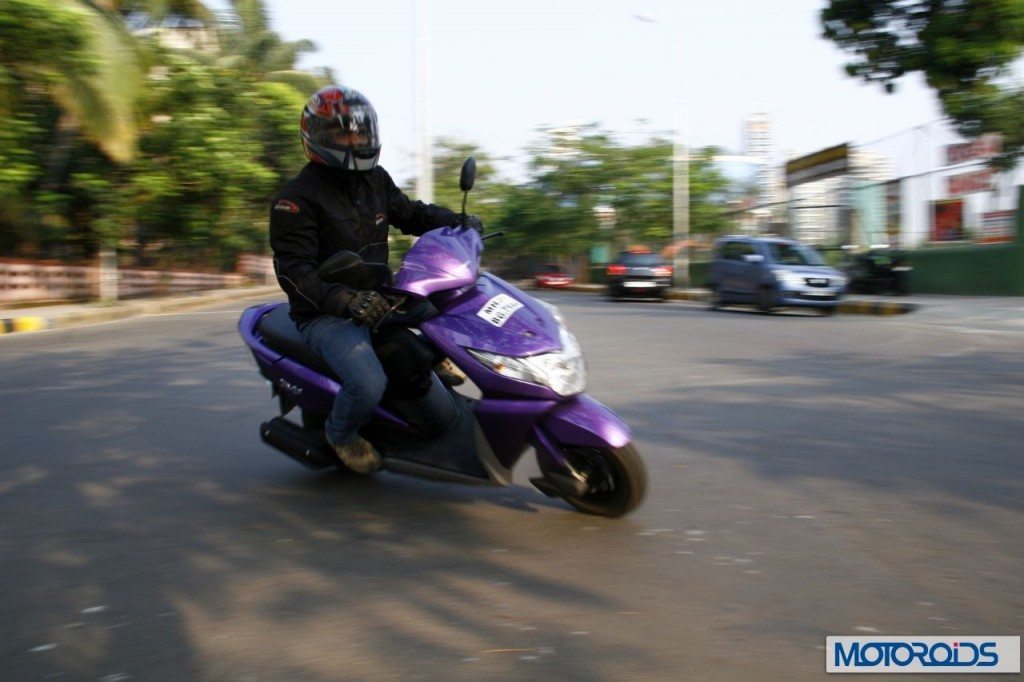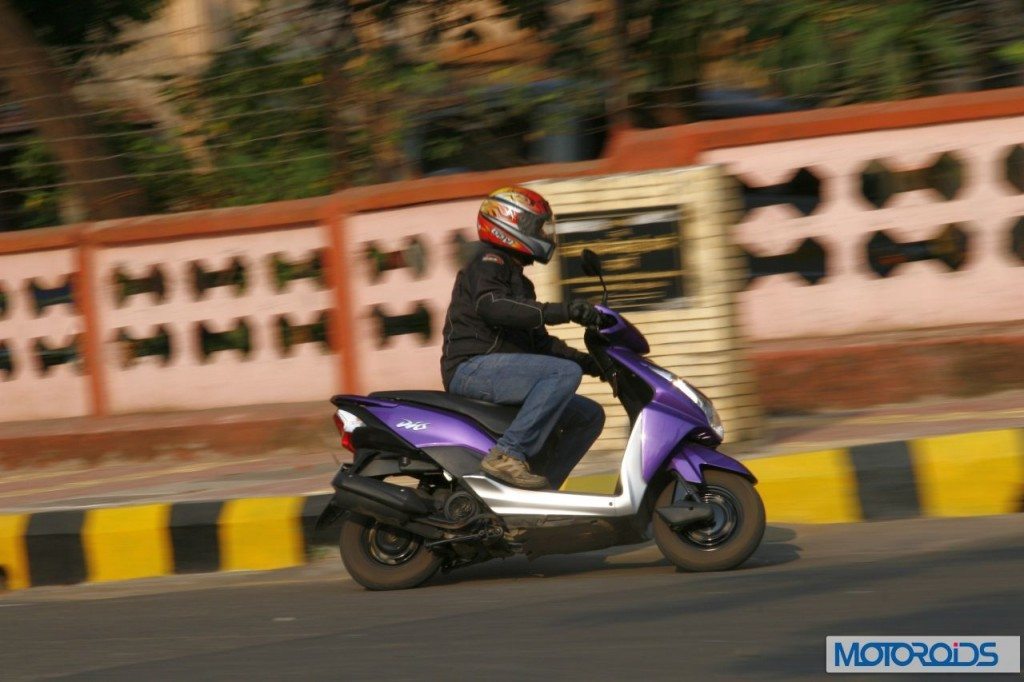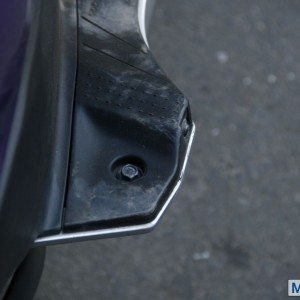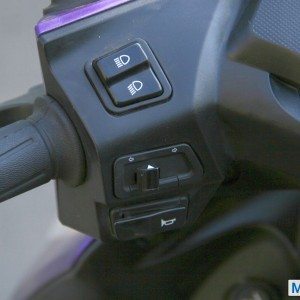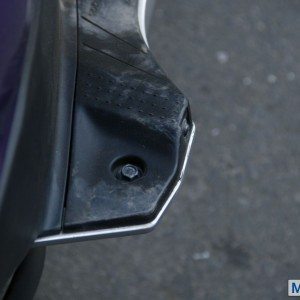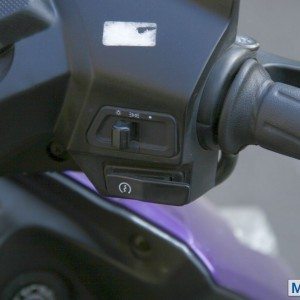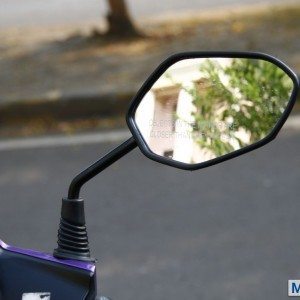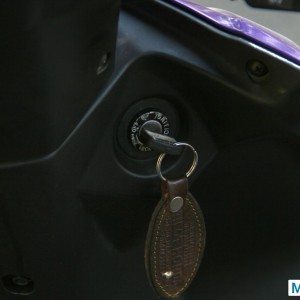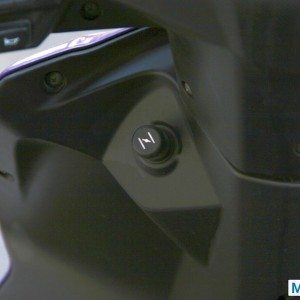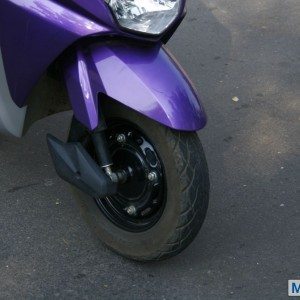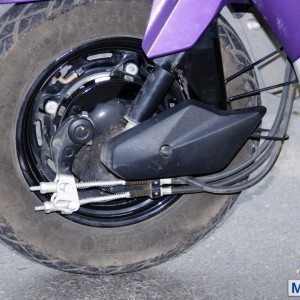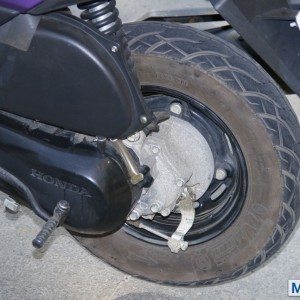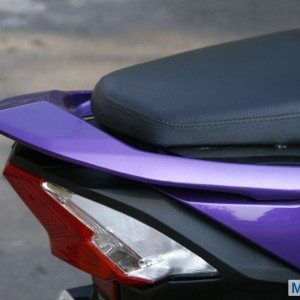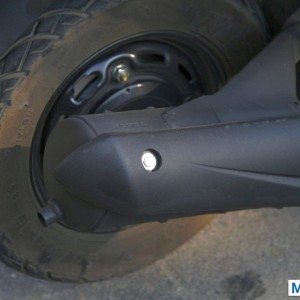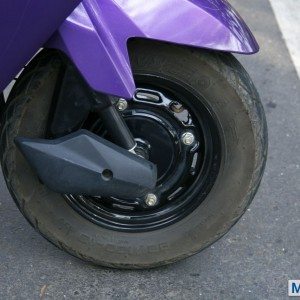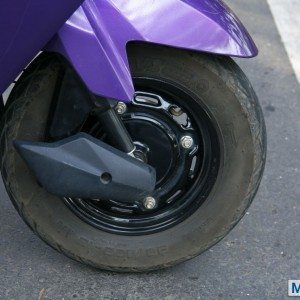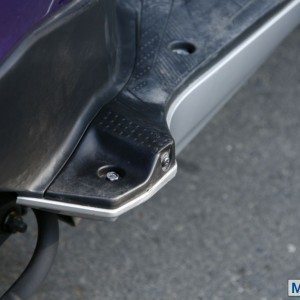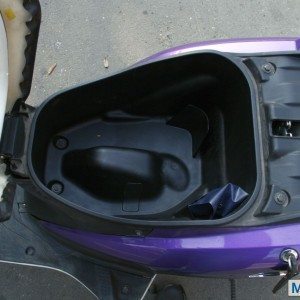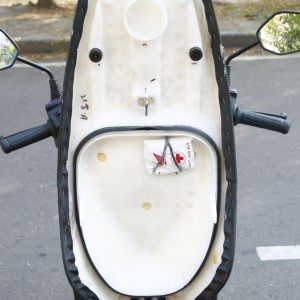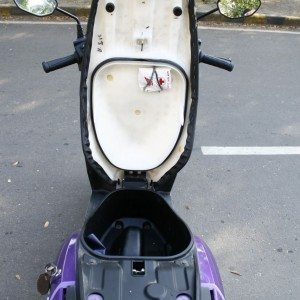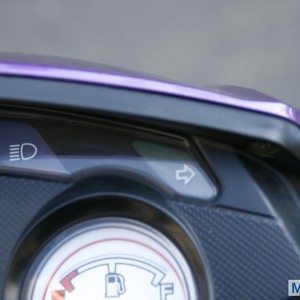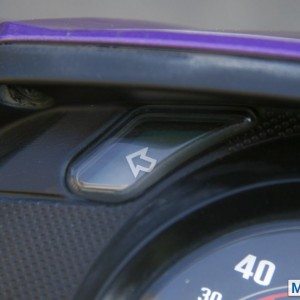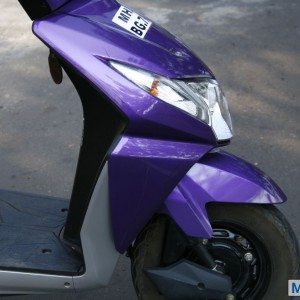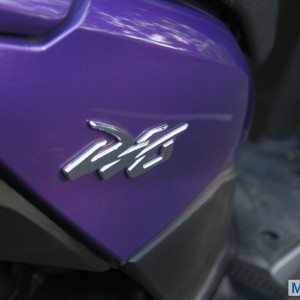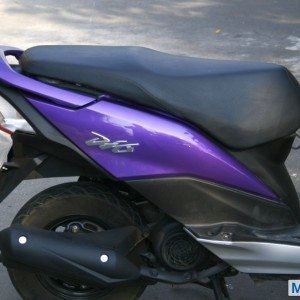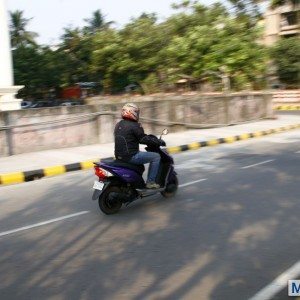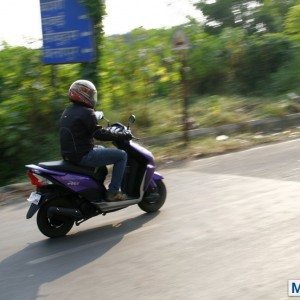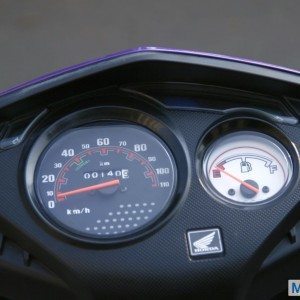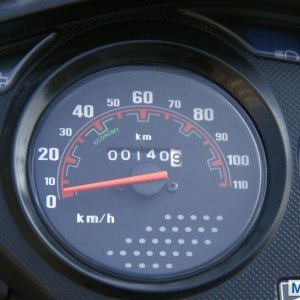New Honda Dio review, images, specs and details
The old Dio itself was ahead of its time. Sharp, angular and oddball – it looked way more futuristic than any of its contemporaries. The new Dio takes the game forward by incorporating significant new changes, which lend it a new personality, but without taking away its old identity. The sharp and angular theme persists to make it identifiable as a Dio in the first glance. To Honda’s credit, the Dio still looks distinguishably stylish, sporty and very, very jazzy.
Changes on the new, 2012 Honda Dio are many, and the beauty of it is that even with so many changes, the Dio doesn’t seem to have lost its individuality even a teeny bit. Key changes include a new front apron, which witnesses the blinkers having been incorporated into a V-shaped headlight panel. Gone are the separate blinker units which flanked the smaller headlight. The apron itself now extends further before dipping back above the front fender. The apron is sharper in profile now, with a pointier, arrow-head like design and a pronounced ridge on its lower sides. The handle bar fairing remains largely the same as the older model, but with the Honda logo emblazoned across it in smaller font.
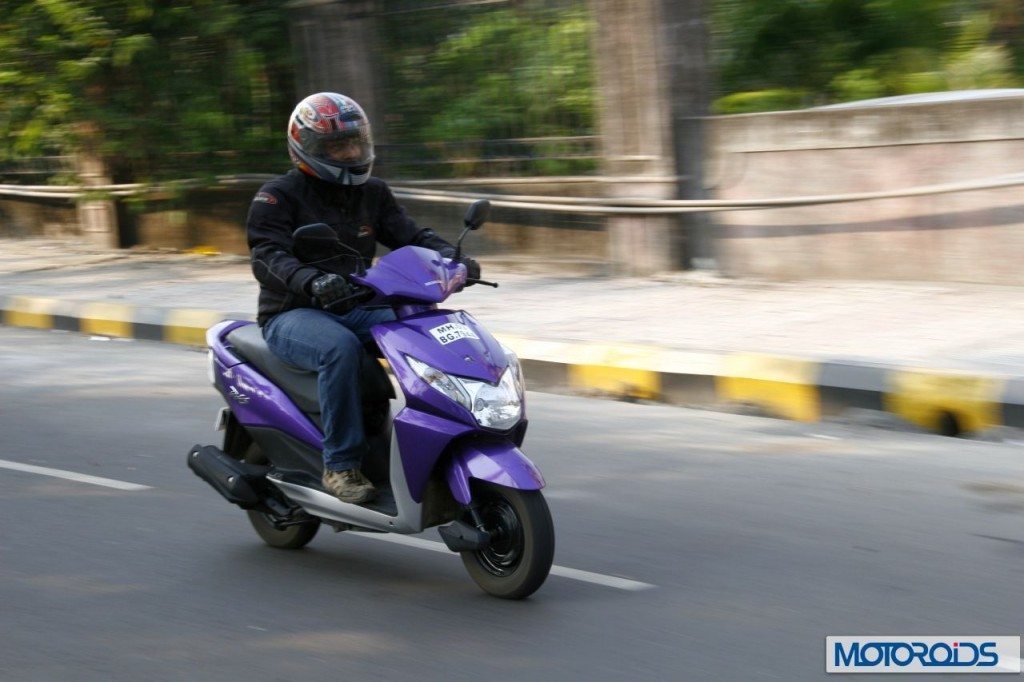
In profile, the central portion, primarily below the footboard and on the aft end of the apron is done in the less prominent colour of the two-tone scheme. The footboard itself is now slimmer, liberating more space for the rider. The black plastic section has been extended, and the painted area has been reduced beneath the seat. The area above the wheels at the rear is now exposed a little more, with a slash in the rear panel which makes the behind of this snazzy scoot look much pointier than earlier. Gone are the jazzy graphics, with a classier Dio emblem in chrome having replaced them on sides.
At the rear, the tail-lamps have undergone an overhaul. Unlike the crab-clawish lamps on the Dio earlier, the new unit is A-shaped and is bigger in size. New body coloured grab rail is a wide, sleek unit, unlike the older pipe-like bar, and adds more pizzazz to the visuals. Other changes include a more angular front fender, a new exhaust unit, sharper looking RVMs, better seat and a new instrument console.
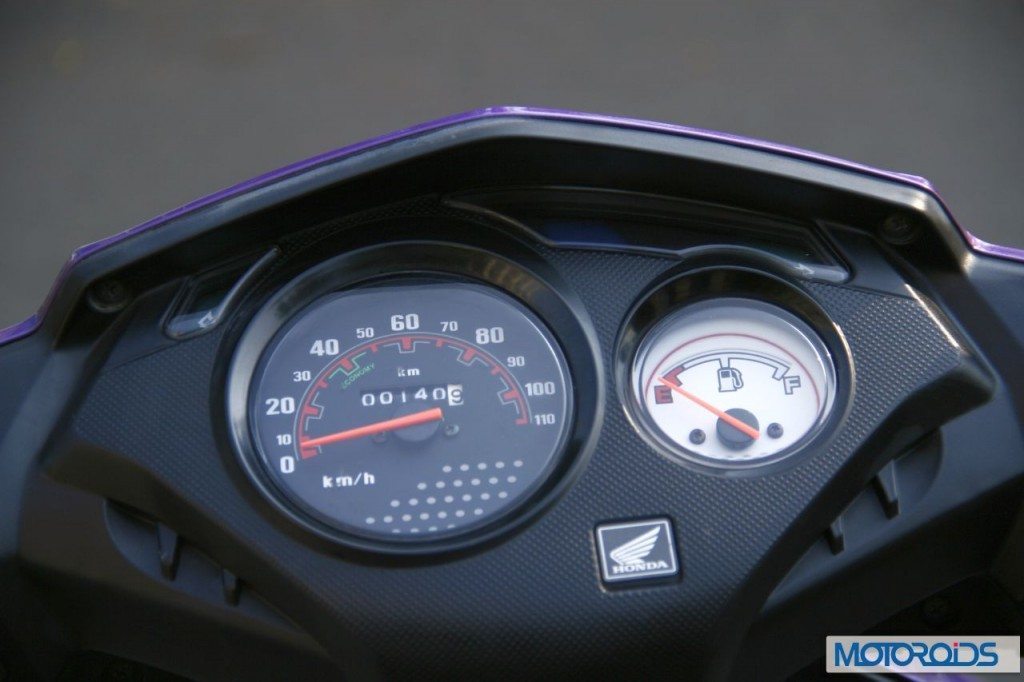
That was about the face, but the new Dio has plenty of changes made to its heart as well. The engine under the panels now sweeps 7 more cubic centimeters of volume. The new Dio is powered by a new 109cc engine as against the 102cc heart of the older unit. The increased volume has pushed up the power by 1 bhp, and torque by about 0.9 Nm. The new Dio makes 8bhp of peak power at 7500 rpm (as against earlier 7bhp @ 7000 rpm) and peak torque rated at 8.66 Nm @ 5500 rpm (as against earlier 7.7 Nm at 5500 rpm).
Apart from an increased volume, the engine benefits from enhancements like a Roller rocker arm, reduced valve spring load, reduced cooling fan diameter size and better friction reduction. Thanks to all the enhancements, the fuel efficiency of the new Dio, even with the increased power, has gone up by 15% to an ARAI certified figure of 66.7 kmpl. The company claims a real world figure of 55kmpl. Kudos to Honda for that!
On the move, the Dio feels reassuring right from the word go and has an air of muted assertiveness about it. The scoot is surprisingly quick off the line, without making much noise about the fact. There is a mild and muted shudder perceptible as you wring the throttle in low revs, but the engine smoothens out charmingly as the revs build up. The exhaust note is masculine and throaty, without being loud – the Dio really sounds like a well engineered machine. Even as you push the engine towards the upper limit of its rev range, it remains unnerved, with an unstressed, smooth feel about it. At speeds where lesser scooters beg you to let the throttle wring back, the Dio goes about its job without a worry in the world.
The Dio feels surprisingly planted at speed for a scooter. Apart from being well poised on smooth roads, the scooter, even with its small wheels has an appreciable ability to take rough patches in its stride without getting disturbed precariously. Having said that, the combined braking system which applies both front and rear brakes on application of the rear brakes left us wanting for more. Braking didn’t quite have the bite we would have expected, and we felt a distinct judder in the handlebars when applying brakes hard. The test bike we had seemed to be a well-used machine, so the brake bite may well have been a maintenance related issue, than an engineering flaw.
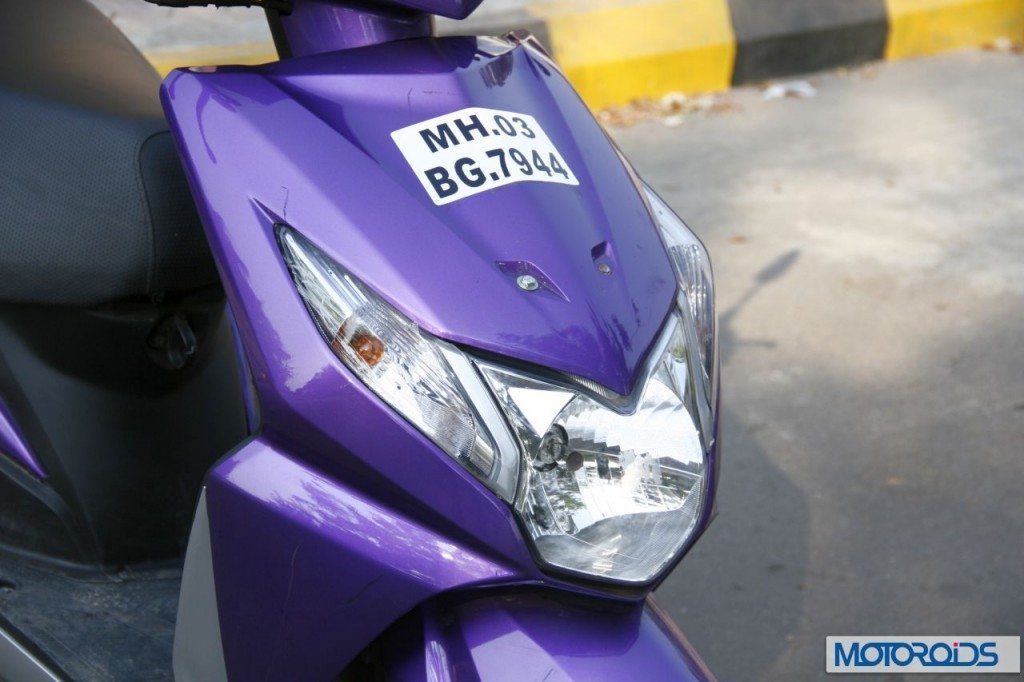
Another braking related issue was the slippery material of the seat, which had our behinds sliding forwards whenever we reined in the speed. The situation gets more worrisome as the pillion rider doesn’t have a proper footpeg to rest his feet on. The front footboard on the Dio extends slightly to offer a little place for the pillion to get some support. Under emergency braking, the mass of both rider and pillion sliding forward may turn into a not so desirable situation. Having said that, while the extended footboard as a foot-peg doesn’t offer enough support, it helps the rider while pedaling the scoot by not obstructing the calves.
Handling, more often than not is Scooters’ Achilles Heel. One cannot expect these tiny wheeled machines to exhibit the poise and balance of motorcycles. The Dio, to its credit, fares appreciably well in terms of composure. It’s no machine for track antics or leaning over, but it won’t disappoint you if you tilted it a bit around that corner at the end of your lane. More than anything, there is a reason why that rare breed of scooter stunters in India chooses this machine over anything else as their preferred tool. The 90-100 / 10 tubeless TVS rubber may probably have been substituted by a grippier variety, but you cannot fault the Dio for its handling.
From the rider’s position, the new Dio feels bigger and more substantial than most of its rivals. The vertically stacked speedo-fuel gauge console on the earlier version of the scoot has been transformed into a twin pod unit now. Nothing jazzy here though, with a basic, analogous speedo-odo-fuel gauge combo with separate blinker (L and R) lights and a high beam indicator. The dimpled plastic panel around the console is made of good quality plastic. The switchgear too, though basic, is again made of very good quality plastic and has a built to last feel about it.
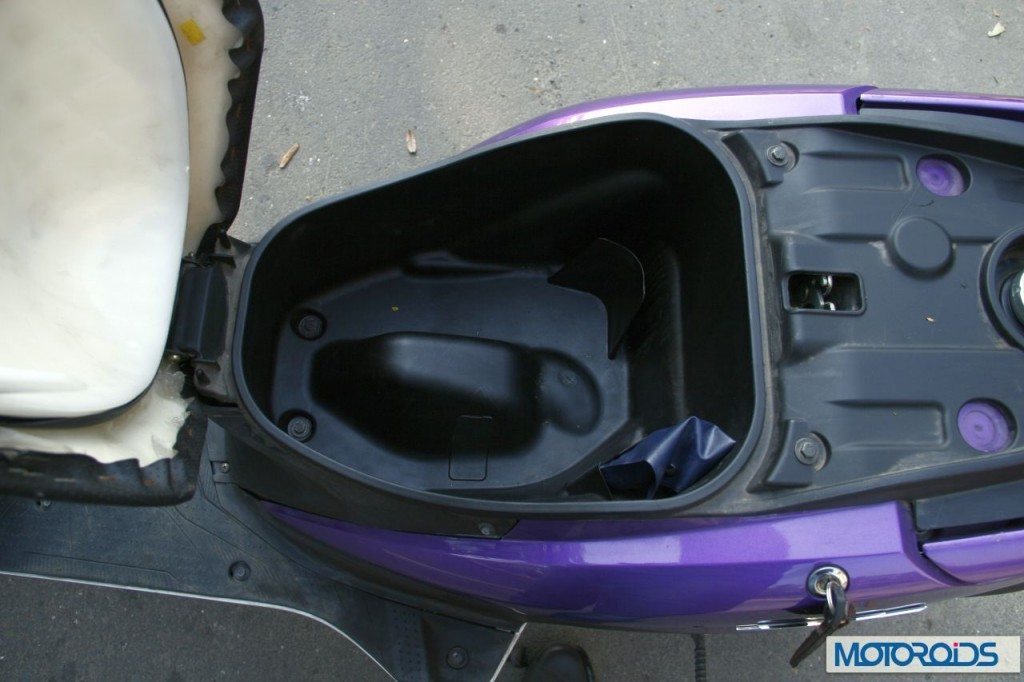
For enhanced utility, Honda have improved the under seat storage to 18 liters, which means that the new, more comfortable seat, when flipped open can swallow a full face helmet without a burp. In fact, we managed to fit in our well padded DSG jacket in the storage without a problem. On the flip side, there are no storage spaces in the front panel. I am not talking about those overdone glove compartments which more often than not eat into your knee and foot space, but about those little cubby holes near the ignition slot where you can shove a cleaning cloth.
Some really nice features on the Dio include tuff up tubes on wheels at both ends, a low maintenance battery and a viscous air filter which needs replacement only after 15k km. While those features spell convenience, we would have much like the optional side stand to be a standard fitment. It’s an absolute must for ladies who would find it far more cumbersome to put the vehicle on the main stand. In our honest opinion, that convenience should be shipped as standard fitment, even if it is at an extra price. Having a side stand on a scoot is a necessity, not an option. We also found the seat height of the Dio to be a tad too tall for short female riders. Not much to worry about, but we have seen and ridden scoots which offer a lower height to accommodate the fairer sex better.
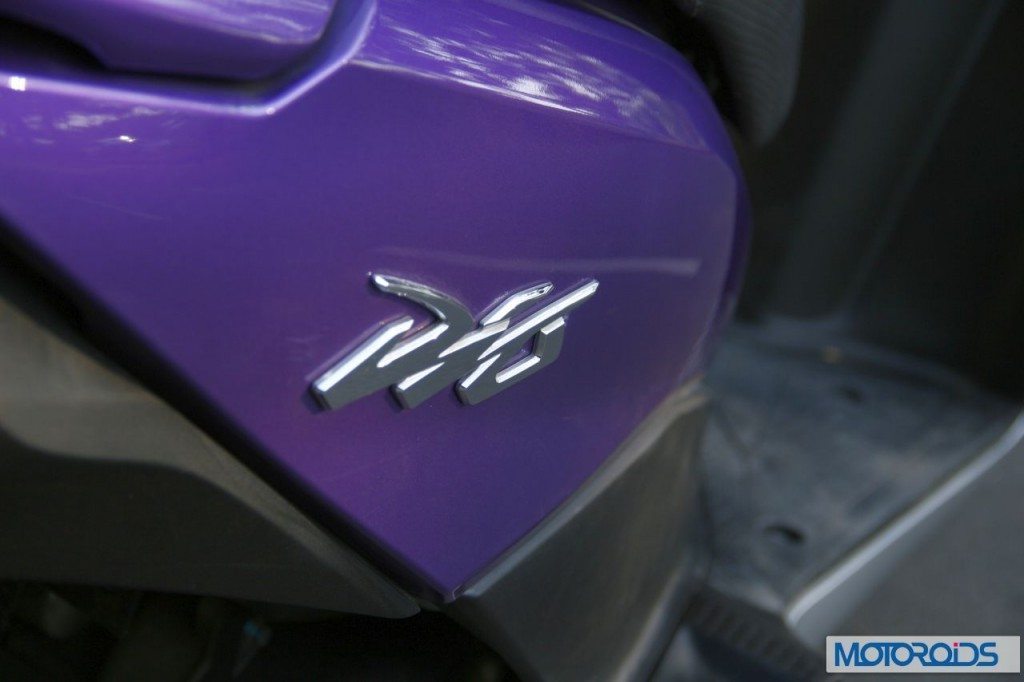
The Dio, then, is a scooter for all sexes, sensibilities and seasons. It’s one of the most compelling buys in a market which of late has been cluttered with a multitude of options. It comes with time tested and much revered Honda engineering and technology, its styled better than most other offerings in the market, and most importantly, retails at a price which is anywhere from Rs 2k to 4k less than that of its primary rivals. Unless you have very specific needs like a front fuelling cap, or a digital speedo or a bigger engine, the Dio should really be an indispensable option on your shortlist.
Check out the image gallery at the bottom of the post for more detailed images of the scoot
Motoroids rating 4/5
Price: Rs 42,000 ex-Delhi
Positives
Smooth, refined, powerful and efficient engine
Great styling
Good storage space
Price
Negatives
Some utilitarian features missing
Inconvenient foot-pegs for pillion
Honda Dio specifications
Displacement 110 cc
Compression Ratio 9.0:1
Power 8 BHP @7,500rpm
Torque 8.66Nm @5,500 rpm
Bore x Stroke 50 x 52 mm
Ignition CDI
Tyre Size Front 90/90 – 10 53J, Rear 90/90 – 10 53J
Wheel Base 1238 MM

